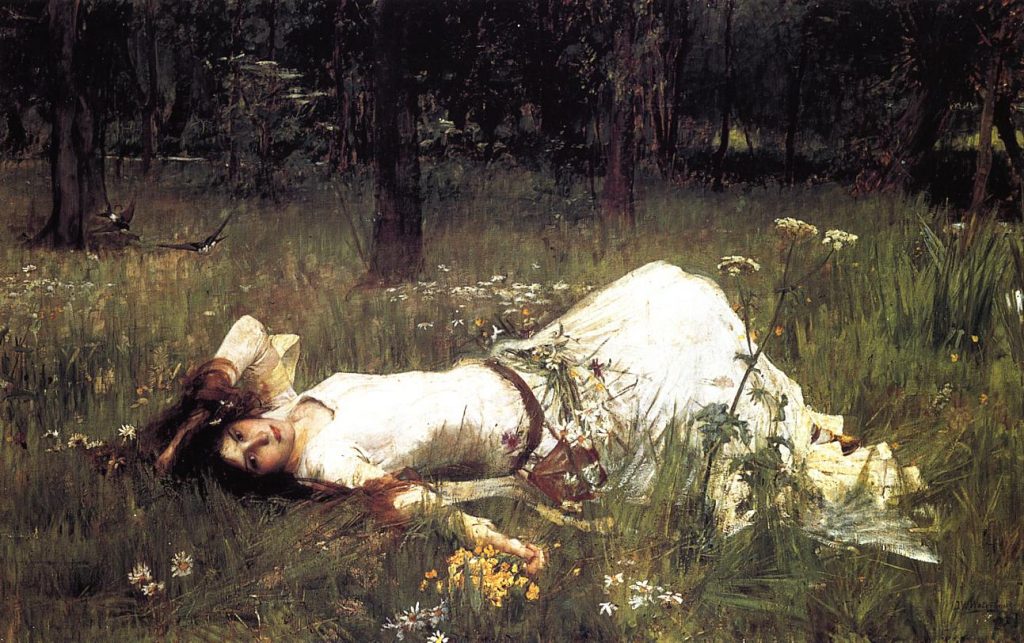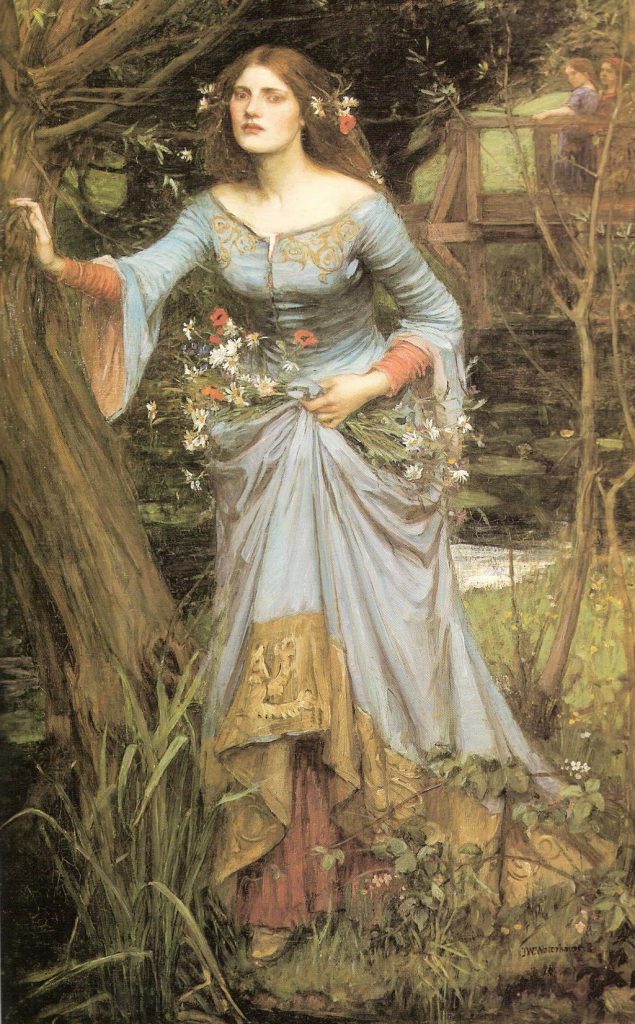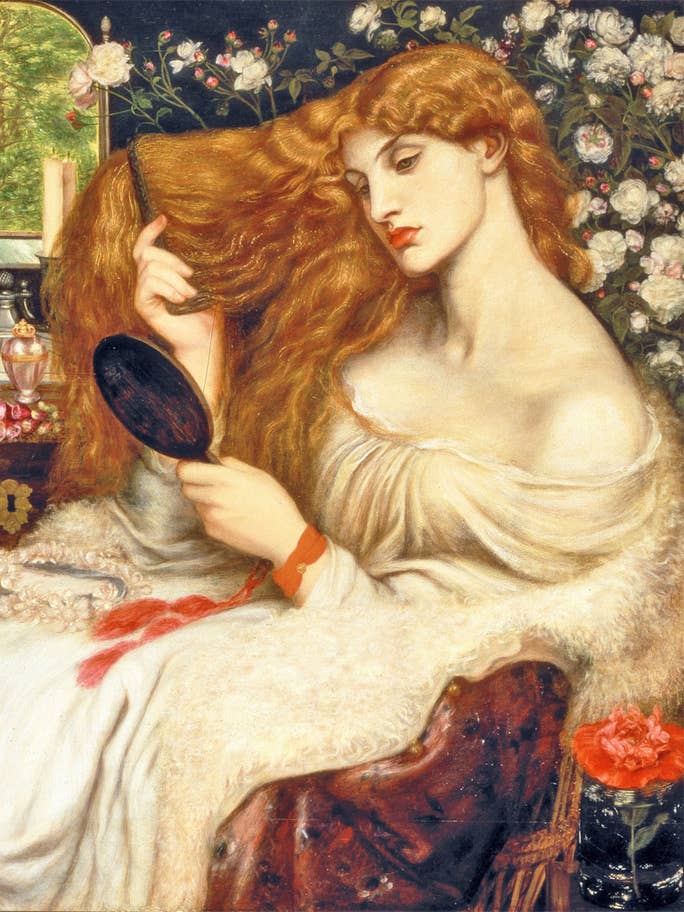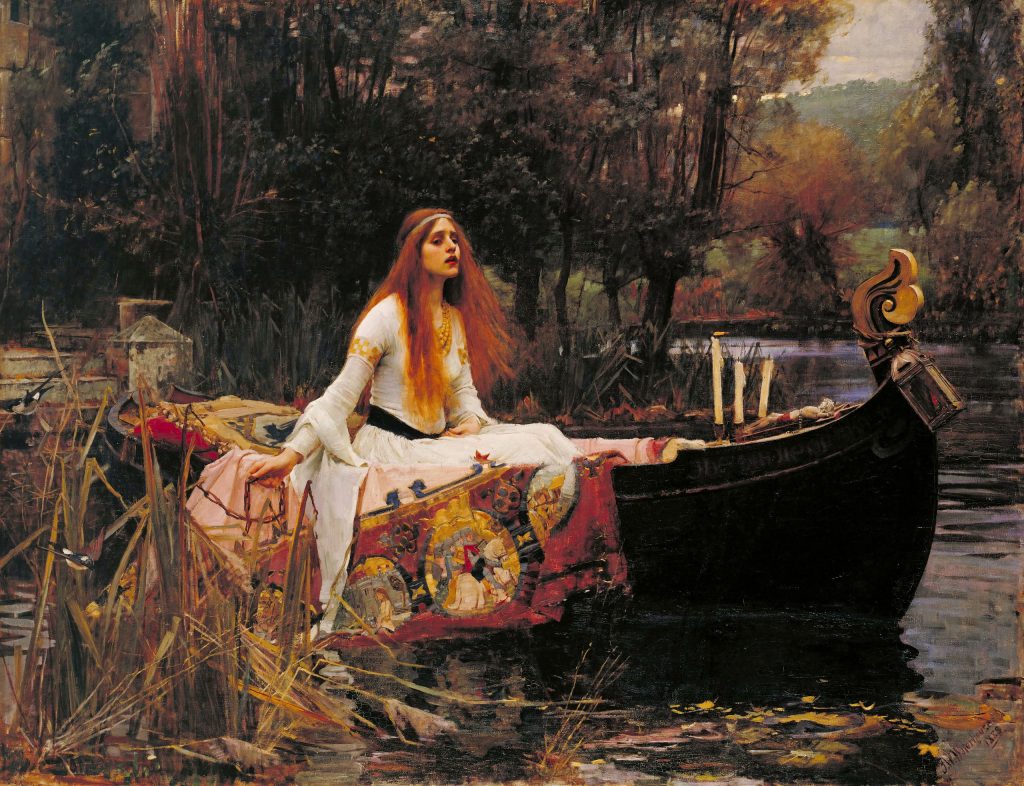John William Waterhouse was born in 1849 in Rome where his father lived as an artist. He soon left back to England in 1854 where his interest in art, specifically drawing took off. By 1870, Warehouse was studying sculpture at the Royal Academy but redirected his studies to painting in 1874. His paintings became an instant hit with the academy and would be exhibited annually at the RAs summer exhibition till 1916.
Waterhouses’ early years in painting were undoubtedly marked by the academy as he followed a seemingly classical style of painting. He had accuracy in his characters and settings, his use of bright colors was sparse and his themes/subjects were conventional. Such can be seen in his artwork Sleep and His Half Brother Death (1874)(fig.1).

Despite his academic training and his classical start, Waterhouse began to show interest in more exotic paintings and vibrant colors by 1880. His themes became heavily based on literature and mythology and his figures were more often than not were “ (…) dramatic, beautiful women—damsels in distress, enchantresses, or femmes fatales ” (John William Waterhouse, 2019. , with his favorite being Ophelia (see fig.2, 3, 4). This change marked the beginning of his pre-raphaelite career.

Figure 2. Ophelia 1889 
Figure 3. Ophelia 1894 
Figure 3. Ophelia 1910
By the late 1880s, Warehouses began to adopt a unique technique, seen in many artworks of the Impressionist movement, which required quick and light brushstrokes. He paired his unique brushwork created for a blurry effect with one for extreme softness, detail, and accuracy. This enabled him to create beautiful compositions and realistic figures. It also enabled him to separate himself from other Pre-Raphaelite artists such a Millais or Rossetti whose figures approached a drawn and cartoon look (see fig.5).

Dante Gabriel Rossetti
In his piece The Lady of Shalott (1888) (fig.6), his sketch-like brush strokes can be admired in the tree, his softness in the figure and his detail in the tapestry. What makes this piece all the more special is his application of complementary colors (green and red) and juxtapositioning of extreme tints and shades.
Until his death in 1917, his subject matter and style was kept rather unchanged. Some paintings were more abstract than others but Waterhouse never strayed from his principles – women, landscapes, and brushwork.

Work Cited
Blumberg, Naomi. “John William Waterhouse.” Encyclopædia Britannica, Encyclopædia Britannica, Inc., 2019, www.britannica.com/biography/John-William-Waterhouse.
“Waterhouse, John William (1849 – 1917).” The Bloomsbury Guide to Art, edited by Shearer West, Bloomsbury, 1st edition, 1996. Credo Reference, https://ezproxy.capilanou.ca/login?url=https://search.credoreference.com/content/entry/bga/waterhouse_john_william_1849_1917/0?institutionId=6884. Accessed 11 Oct. 2019.
Wootton, Sarah. “Pre Raphaelite Brotherhood 1848 1853.” Encyclopedia of the Romantic Era, 1760-1850, edited by Christopher John Murray, Routledge, 1st edition, 2003. Credo Reference, https://ezproxy.capilanou.ca/login?url=https://search.credoreference.com/content/entry/routromanticera/pre_raphaelite_brotherhood_1848_1853/0?institutionId=6884. Accessed 11 Oct. 2019.
Images
Figure 1. Warehouse, John William. “Sleep and His Half-Brother Death, 1874.” Wikipedia, en.wikipedia.org/wiki/John_William_Waterhouse#/media/File:Waterhouse-sleep_and_his_half-brother_death-1874.jpg.
Figure 2. Warehouse, John William. “Ophelia,1889.” Wikipedia, https://en.wikipedia.org/wiki/John_William_Waterhouse#/media/File:JWW_Ophelia_1889.jpg
Figure 3. Warehouse, John William. “Ophelia,1894.” Wikipedia, https://en.wikipedia.org/wiki/John_William_Waterhouse#/media/File:Ophelia_1894.jpg
Figure 4. Warehouse, John William. “Ophelia,1910.” Wikipedia, https://en.wikipedia.org/wiki/John_William_Waterhouse#/media/File:Ophelia_1910.jpg
Figure 5. Rossetti, Dante Gabriel. “Lady Lilith’, 1866-68” Independent UK ”https://www.independent.co.uk/arts-entertainment/art/features/a-z-of-the-pre-raphaelites-rebel-painters-of-a-completely-different-nature-8107060.html
Figure 6. Warehouse, John William. “The Lady of Shalott, 1888.” Wikipedia, https://en.wikipedia.org/wiki/John_William_Waterhouse#/media/File:John_William_Waterhouse_-_The_Lady_of_Shalott_-_Google_Art_Project_edit.jpg
